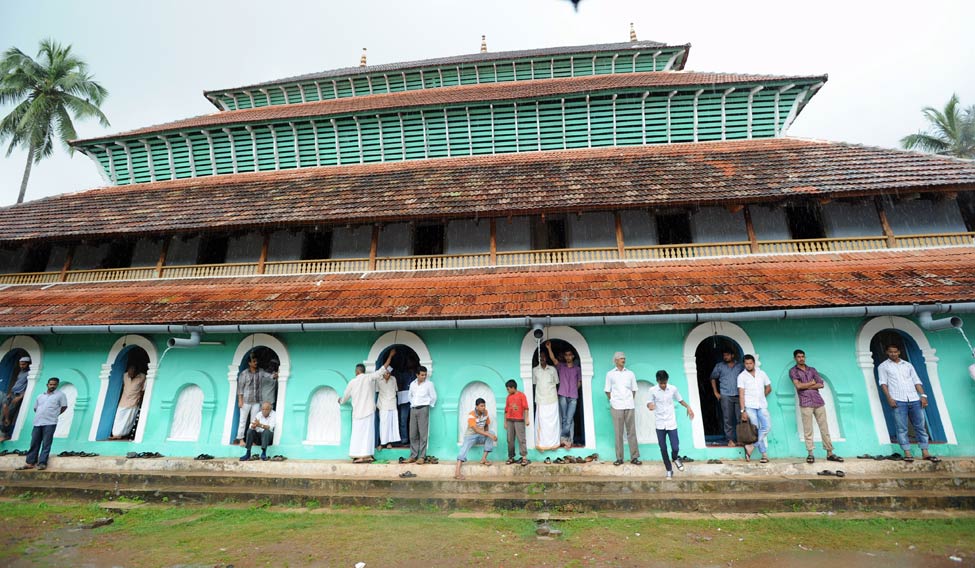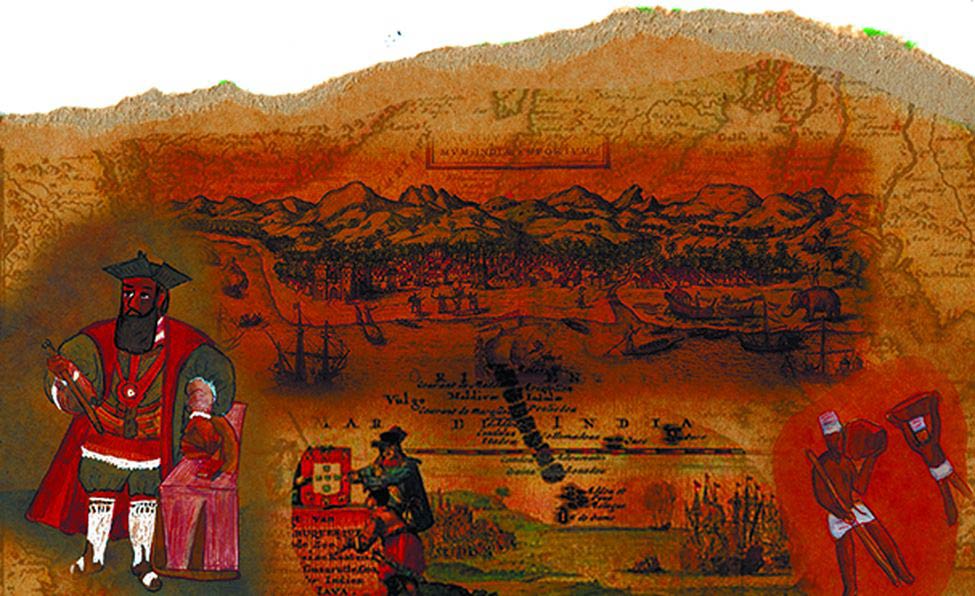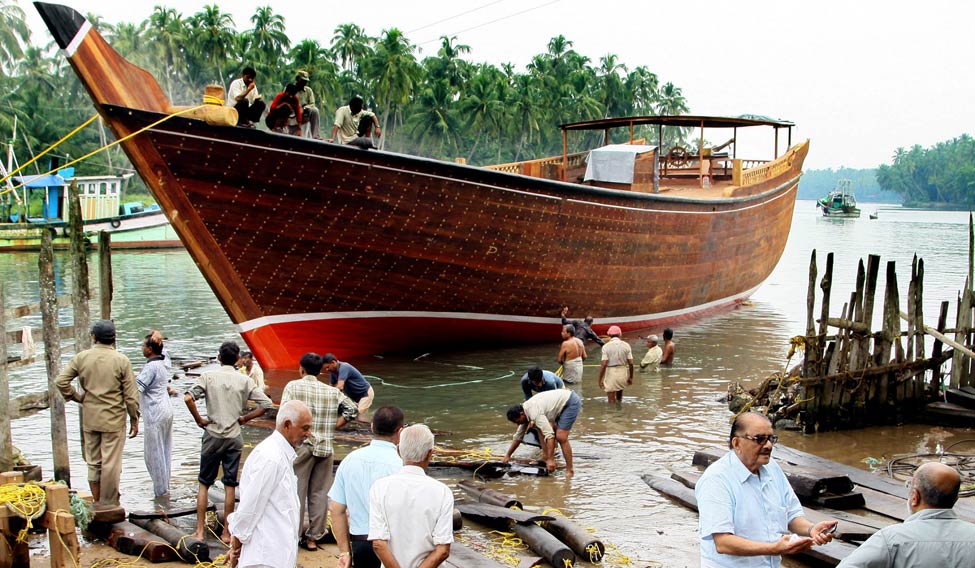The daring eagles swoop down close to one’s head. They snatch the fresh catch with amazing precision.
The crows caw and hover, but maintain a distance. They settle for the shiny tiddlers left behind after the fish are packed with freshly grated ice.
The storks are graceful; some perch on the toe rails of the colourful boats that unload hundreds of boxes of fish at the Beypore harbour in Kozhikode district.
Centuries ago, one would rather have observed the behaviour of hundreds of traders in this region, as Beypore was one of the busiest ports in India. Kozhikode, or Calicut as it was known, was a global business hub. It was frequented by “merchants from every corner of the earth”, according to legendary Moroccan traveller Ibn Battuta.
Ports of Calicut were free and only export and import duties were levied. Merchants and travellers considered the city safe and friendly. Many explorers and historians credit the Samoothiris or Zamorins, the erstwhile rulers of the kingdom, for ensuring this.
The uru or dhow makers of Beypore were an added attraction. The traditional carpenters who made them catered mainly to the Arab merchants, who held sway over Calicut.
The tradition continues to date. About 30 carpenters work for one and a half years to roll out the dhows, primarily for sheikhs and the tourism sector in the Gulf.
The craftsmen use no modern tools, and work without sketches or blueprints―it is all mental calculation. “It is an inherited art,” says Satyan Edathodi, a veteran craftsman. No wonder these urus are called the world’s largest handicraft.
The urus, which cost about Rs.20 crore and weigh up to 400 tonnes, are no longer used for trading purposes; they are now luxury pieces. Though there was a lull in business and many craftsmen shifted base to the Gulf, Beypore is now back in business, says Edathodi.
And the craftsmen here are already excited about the FIFA World Cup 2022 in Qatar, which, they believe, would spike orders.
Back to the 15th century. There was huge global demand for spices, and traders headed to Calicut―the “City of Spices”. And here is a seventh century riddle by the scholarly Saint Aldhelm of England, on the most sought-after product:
“I am black on the outside, clad in a wrinkled cover. Yet within I bear a burning marrow. I season delicacies, the banquets of kings, and the luxuries of the table, both the sauces and the tenderised meats of the kitchen. But you will find in me no quality of any worth, unless your bowels have been rattled by my gleaming marrow.”
Pepper―often referred to as black gold.
 The Mishkal mosque is a reminder of the Hindu-Muslim unity against the Portuguese | Russell Shahul
The Mishkal mosque is a reminder of the Hindu-Muslim unity against the Portuguese | Russell Shahul
According to records, a convict whom Vasco da Gama sent for a recce of Calicut told people ashore that they were looking for “Christians and spices”. On return, he informed da Gama that “all these people are well-disposed and apparently of mild temper”―which stands true till date.
A Moor, who accompanied the convict back to Vasco da Gama’s ship, said: “You owe great thanks to God, for having brought you to a country holding such riches!”
Vasco da Gama, who landed at Calicut's Kappad beach on May 20, 1498 and introduced himself as an ambassador of king Dom Manuel, was given a warm welcome by the Zamorin.
The Arab merchants, however, warned the Zamorin about Portuguese intentions in Calicut. “We are astonished that you should debase yourself by receiving into your country these enemies of your law and strangers to the customs of your kingdom....,” they wrote to him. “Their country is almost five thousand leagues from hence, and the voyage out and home is attended by many dangers through unknown and stormy seas, besides the great cost of their large ships with so many men and guns.
“Hence, at whatever prices they might dispose of their spices in Portugal, it is obvious that such a trade must be carried on with great loss, which is manifest that they are pirates and not merchants, who come here to rob and take your city.”
The Portuguese, in fact, wanted monopoly over trade in Calicut and to flush out the Arabs. The Zamorin refused. There followed bitter battles, in which the Zamorin’s Nairs joined forces with the Arabs.
A testimony to the Hindu-Muslim harmony that prevailed in Calicut is the Mishkal mosque in Kuttichira area of Kozhikode district. The Portuguese set the mosque afire in 1510―some marks of the attack can still be seen―but the Zamorin restored the structure.
 Illustration: Bhaskaran
Illustration: Bhaskaran
In July 2013, the Khazi Foundation organised an iftar to celebrate “that inspiring chapter of religious harmony in the history of the region”. The event attended by social luminaries saw the chief khazi of Kozhikode and the current Zamorin, Sri Manavikraman Raja, exchanging miniature models of the mosque and the Tali Shiva Temple, patronised by the royal family.
By the second half of the 17th century, the Dutch rose and the Portuguese fell. And in the 18th century Calicut was conquered by Tipu Sultan. Calicut’s glory as a trans-oceanic hub eventually became history.
However, with the enterprising nature of the people of Calicut, the city resurged as popular rice market, bringing back Arab traders by the 19th century. Later, until the 1980s, it remained one of the world’s largest exporters of timber.
But then came a major shift. Timber trade declined and laws curbed felling of trees, forcing many sawmills here to shut down. And with the Gulf boom―courtesy the current black gold―the Arabs exited Calicut, and the local people followed them in search of jobs.
Kozhikode and the neighbouring district Malappuram register the highest remittances from the Gulf. One can see that the sleepy, old-world Calicut is rapidly transforming into a metropolis, with numerous malls, two cyber parks and a knowledge park and a monorail project coming up.
In 2012, the urbanisation rate of the district was 67.15, against the state average of 47.72, according to Regional Town Planner G. Sasikumar, who termed it “unbelievable” at a presentation last year. “Kozhikode is developing a metro character,” he noted.
Kozhikode is no more a “City of Spices”, but it is home to the Indian Institute of Spices Research, an award-winning wing under the Indian Council of Agricultural Research.
It was launched in 1975 as a regional station of Central Plantation Crops Research Institute, but subsequently evolved into a full-fledged institute of global repute, and is the headquarters for 19 centres of the all-India coordinated research project on spices.
The institute’s primary focus, of course, is on black pepper, besides ginger, turmeric, cardamom, nutmeg, cinnamon and cassia. The IISR boasts the world’s largest germ plasm collection of spices. For instance, its research lab has 2,300 black pepper accessions and 1,400 hybrid varieties.
One of the objectives of the institute “is to have a 20 per cent increase in spice export”, says IISR director M. Anandraj. “If this is the case, the productivity in black pepper [for example] must increase from the present level of 260kg to 943kg per hectare.”
Besides encouraging local farmers, the IISR has a Vision 2050 document. “Over the years,” it says, “India's share in world spices market has not appreciated much and its monopoly as a supplier of spices is threatened by countries like China, Brazil, Vietnam....” The institute is working on reversing this trend and boosting India's spice output.
If it does so, Kozhikode can perhaps reclaim the tag of “City of Spices”.






